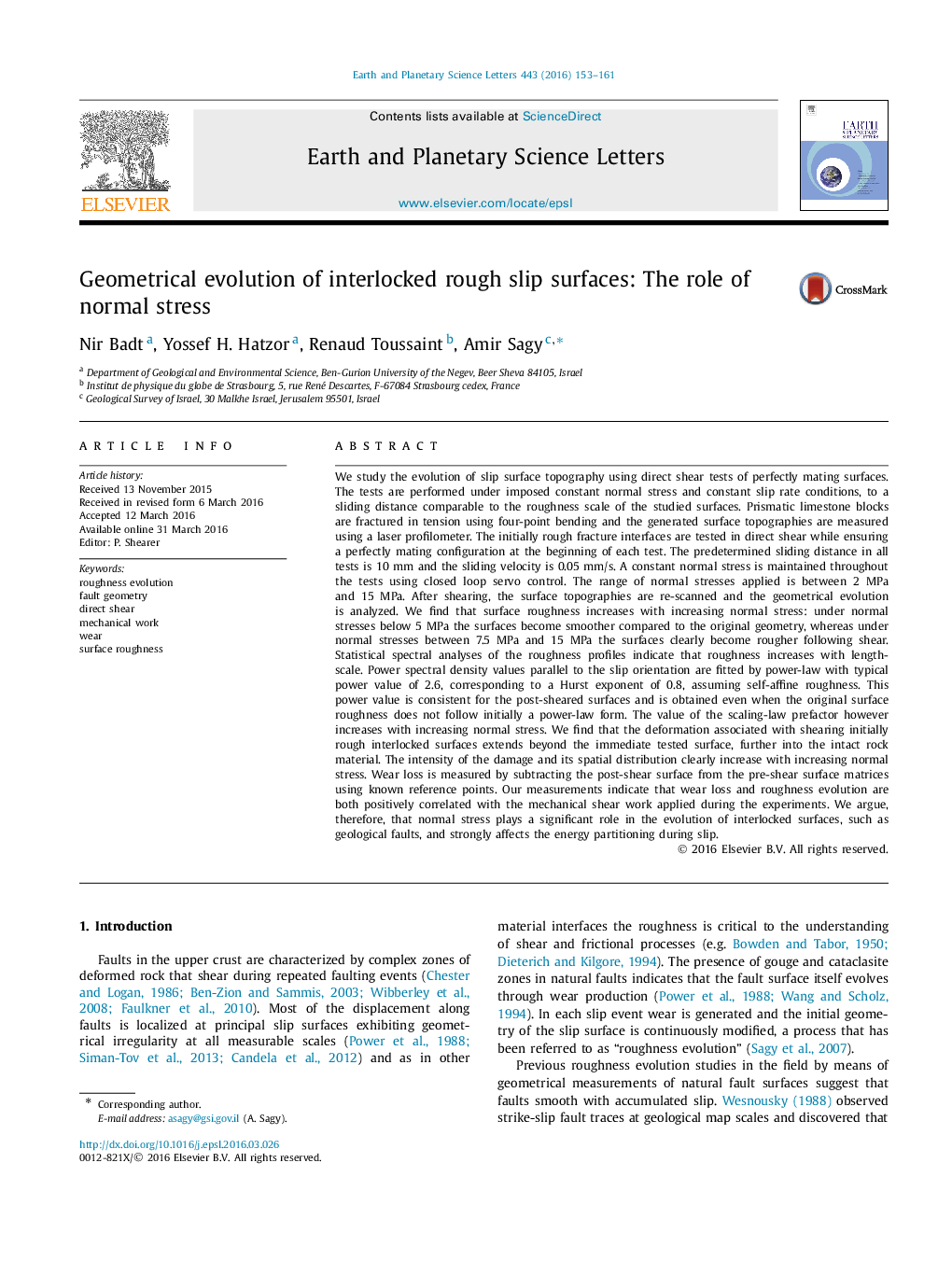| کد مقاله | کد نشریه | سال انتشار | مقاله انگلیسی | نسخه تمام متن |
|---|---|---|---|---|
| 6427439 | 1634713 | 2016 | 9 صفحه PDF | دانلود رایگان |
- Surface roughness increases with increasing normal stress.
- The value of the scaling-law prefactor increases with normal stress and decreases with slip amount.
- Wear loss and roughness evolution are positively correlated with mechanical shear work.
- Deformation of interlocked surfaces extends beyond the immediate asperities zone.
- Energy dissipation during shear is controlled by level of normal stress and initial fault roughness.
We study the evolution of slip surface topography using direct shear tests of perfectly mating surfaces. The tests are performed under imposed constant normal stress and constant slip rate conditions, to a sliding distance comparable to the roughness scale of the studied surfaces. Prismatic limestone blocks are fractured in tension using four-point bending and the generated surface topographies are measured using a laser profilometer. The initially rough fracture interfaces are tested in direct shear while ensuring a perfectly mating configuration at the beginning of each test. The predetermined sliding distance in all tests is 10 mm and the sliding velocity is 0.05 mm/s. A constant normal stress is maintained throughout the tests using closed loop servo control. The range of normal stresses applied is between 2 MPa and 15 MPa. After shearing, the surface topographies are re-scanned and the geometrical evolution is analyzed. We find that surface roughness increases with increasing normal stress: under normal stresses below 5 MPa the surfaces become smoother compared to the original geometry, whereas under normal stresses between 7.5 MPa and 15 MPa the surfaces clearly become rougher following shear. Statistical spectral analyses of the roughness profiles indicate that roughness increases with length-scale. Power spectral density values parallel to the slip orientation are fitted by power-law with typical power value of 2.6, corresponding to a Hurst exponent of 0.8, assuming self-affine roughness. This power value is consistent for the post-sheared surfaces and is obtained even when the original surface roughness does not follow initially a power-law form. The value of the scaling-law prefactor however increases with increasing normal stress. We find that the deformation associated with shearing initially rough interlocked surfaces extends beyond the immediate tested surface, further into the intact rock material. The intensity of the damage and its spatial distribution clearly increase with increasing normal stress. Wear loss is measured by subtracting the post-shear surface from the pre-shear surface matrices using known reference points. Our measurements indicate that wear loss and roughness evolution are both positively correlated with the mechanical shear work applied during the experiments. We argue, therefore, that normal stress plays a significant role in the evolution of interlocked surfaces, such as geological faults, and strongly affects the energy partitioning during slip.
Journal: Earth and Planetary Science Letters - Volume 443, 1 June 2016, Pages 153-161
